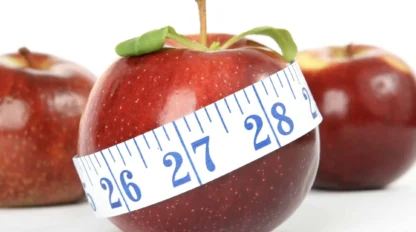Conquering a Weight Loss Plateau

Hitting a weight loss plateau is a common yet frustrating experience for many people on their weight loss journey. While initial progress often comes quickly, it’s not uncommon to find yourself stuck at a certain weight, despite your best efforts. So why do these plateaus happen, and how can you push past them?
Why Weight Loss Plateaus Happen
Weight loss plateaus occur when your body adapts to the changes you’ve made in your diet and exercise routine. As you lose weight, your metabolism slows down because your body requires fewer calories to maintain its new, lower weight. This adaptive thermogenesis, as it’s called, is a natural defense mechanism your body uses to prevent excessive weight loss and ensure survival during times of food scarcity. Over time, your body becomes more efficient at performing daily activities, meaning you burn fewer calories, leading to a plateau. Other factors such as stress, hormonal changes, and insufficient sleep can also contribute to a stall in weight loss progress.
How to Overcome a Weight Loss Plateau
- Reassess Your Caloric Intake: One of the first steps in breaking a plateau is to re-evaluate your daily caloric intake. As you lose weight, you might need to consume fewer calories to continue losing weight. Using a food diary or Options Health Coach app to track your intake can help ensure you’re staying within your new calorie requirements. Stepping on an InBody scale, like those at Options, is helpful to see changes in body composition and the impact on your basal metabolic rate. Take a look at what types of food are making up your calories. Again, tracking your foods will be a valuable exercise to shed light on this. Also, discussing with a trained health coach about your specific situation will be helpful. Review our blog on High-Protein Diet: The Key to Maximizing Semaglutide Benefits. A high protein diet benefits anyone trying to lose or maintain their weight and muscle mass.
- Switch Up Your Exercise Routine: Your body adapts to the exercises you do regularly, which can decrease the effectiveness of your workouts over time. To counteract this, try changing your routine by incorporating different types of exercises like high-intensity interval training (HIIT), strength training, or increasing the intensity or duration of your current workouts.
- Consider Medical Interventions: If you’ve tried adjusting your diet and exercise without success, it might be time to consider medical interventions. Prescription medications or treatments like GLP-1 medications can help by targeting the physiological factors that contribute to weight loss plateaus. These medications work by regulating appetite and metabolism, helping you break through stubborn plateaus. Meeting with an obesity-certified medical provider, such as those at Options Medical Weight Loss, will guide you toward programs and medications that will serve your specific needs best while taking into account current medical conditions and bloodwork.
Final Encouragement
Weight loss plateaus are a normal part of the journey, but they don’t have to be the end of it. By understanding why they happen and implementing strategies like adjusting your caloric intake, diversifying your exercise routine, and considering medical interventions, you can overcome these stalls and continue towards your weight loss goals.
Options offers everyone a free weight loss consultation and metabolic analysis (that innovative InBody scale mentioned earlier!). Schedule yours today!
Read more from the NIH.
Options Medical Weight Loss
Last updated: Aug 14, 2024


